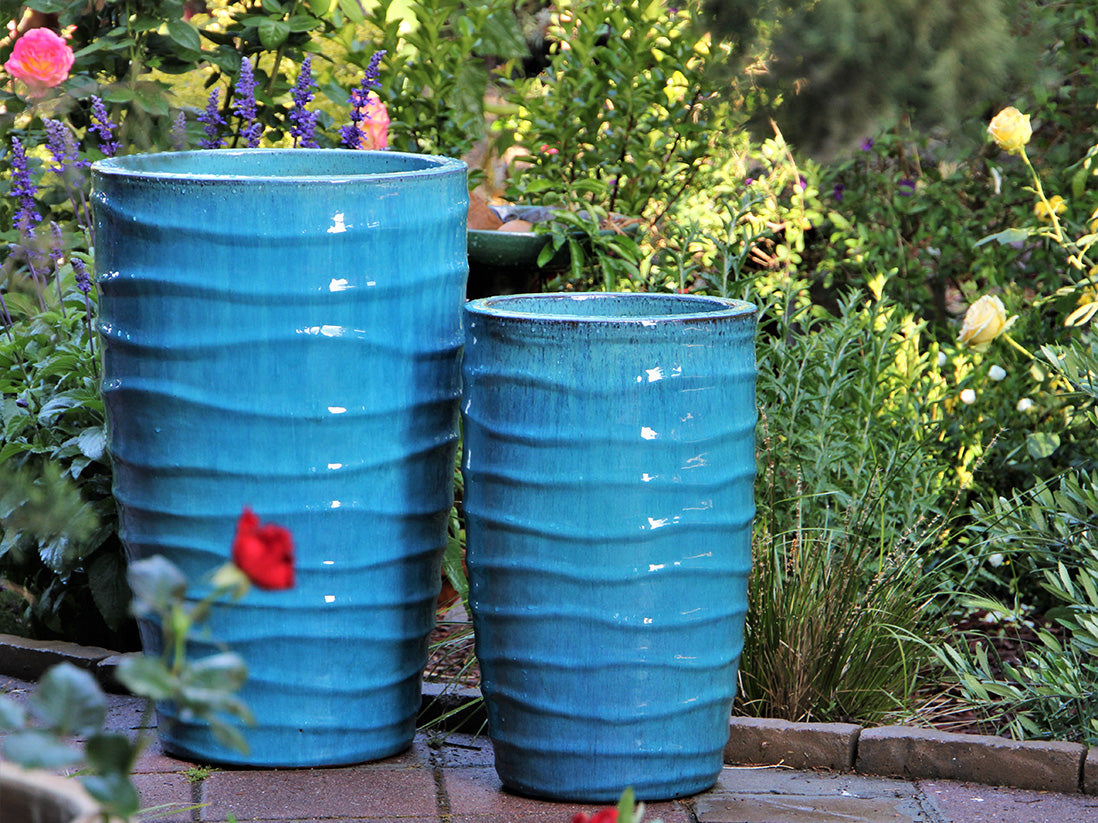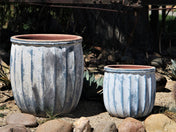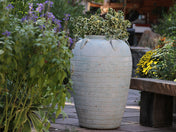When you’re picking planters, the material isn’t just about looks, it changes how your plants grow and how much work you put in. Terracotta, ceramic, or concrete planters, each have their own pros and cons.
In this blog, what we’ve gathered is not just from gardening blogs, but also from real conversations on Reddit, Quora, and years of trial-and-error in the backyard.
Let’s start with terracotta, because it’s probably the one most people recognize.
Terracotta Planters
Terracotta is just clay that’s been baked until it’s hard. Terracotta planters look warm, orangey brown you see in patios, balconies, and grandma’s garden. Some people love it, some don’t. But, the large outdoor ones? They just feel… classic.
Pros & Cons of Terracotta Planters
Pros
- They breathe because the clay is porous. You can actually feel the difference. Water seeps out a bit, air gets in. Roots don’t sit in soggy soil, which is great.
- They’re perfect for plants that like dry feet - succulents, cacti, rosemary, lavender. It lets the soil dry out faster.
- They’re cheap and made from natural clay. No guilt if one breaks. You can literally smash it up and toss it back into the garden as drainage.
Cons
- They dry out faster than you think. If it’s summer or windy, you might be watering every day.
- Winter can kill them. Water in the clay freezes, expands, and - crack - there goes your pot.
- Not everyone likes the color. You can paint them, but then you lose the breathability that makes them so good in the first place.
A lot of folks recommend terracotta for “overwaterers” because the pots basically help save your plants from drowning. And while the look screams “old world,” we’ve seen people whitewash them, stencil designs, even wrap them in jute to make them work in a modern space.
Terracotta Planters From Plantatorem
Panos Planter
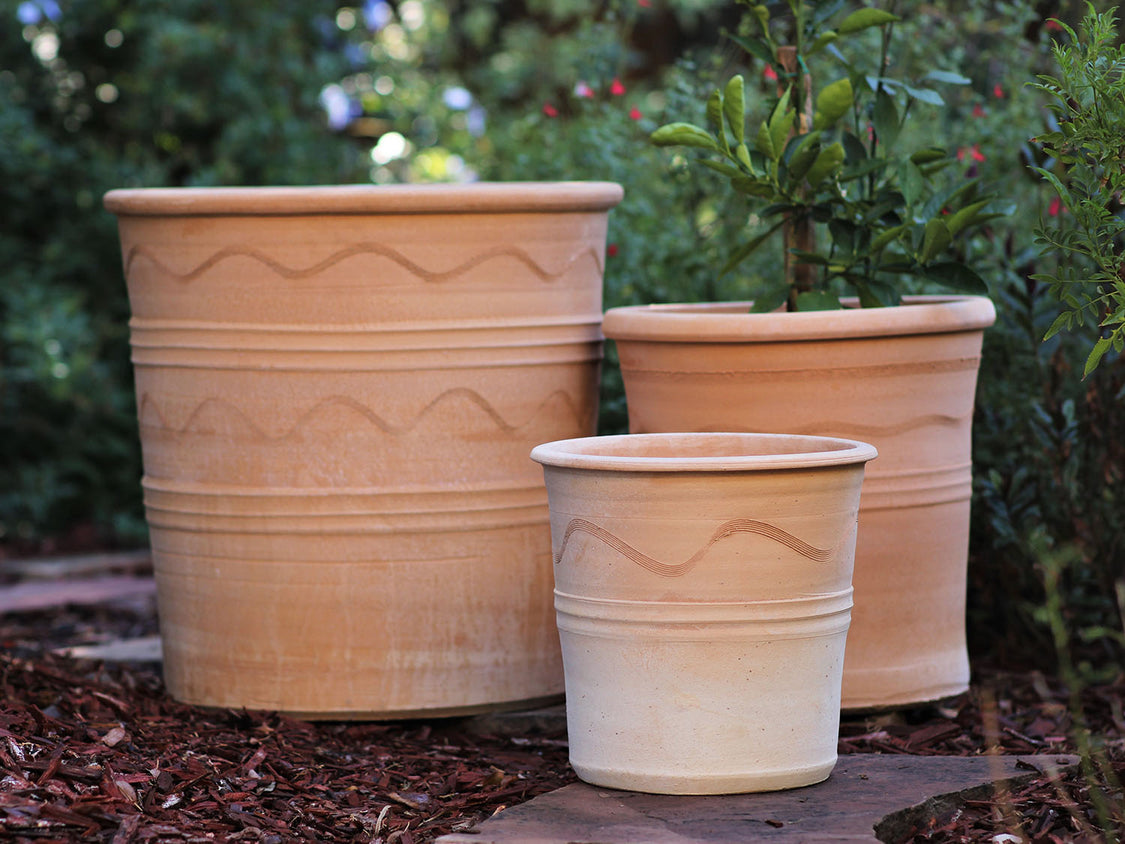
The Panos Planter is made from clay dug from local soil. It gets its strength from a hot burn in olive pit-fueled kilns. The clay walls are thick and a little rough to the touch. Great for letting the soil breathe and keeping plants comfortable through heat or cool weather. Olives, lavender, rosemar, they all feel right at home here.
Koronios Planter
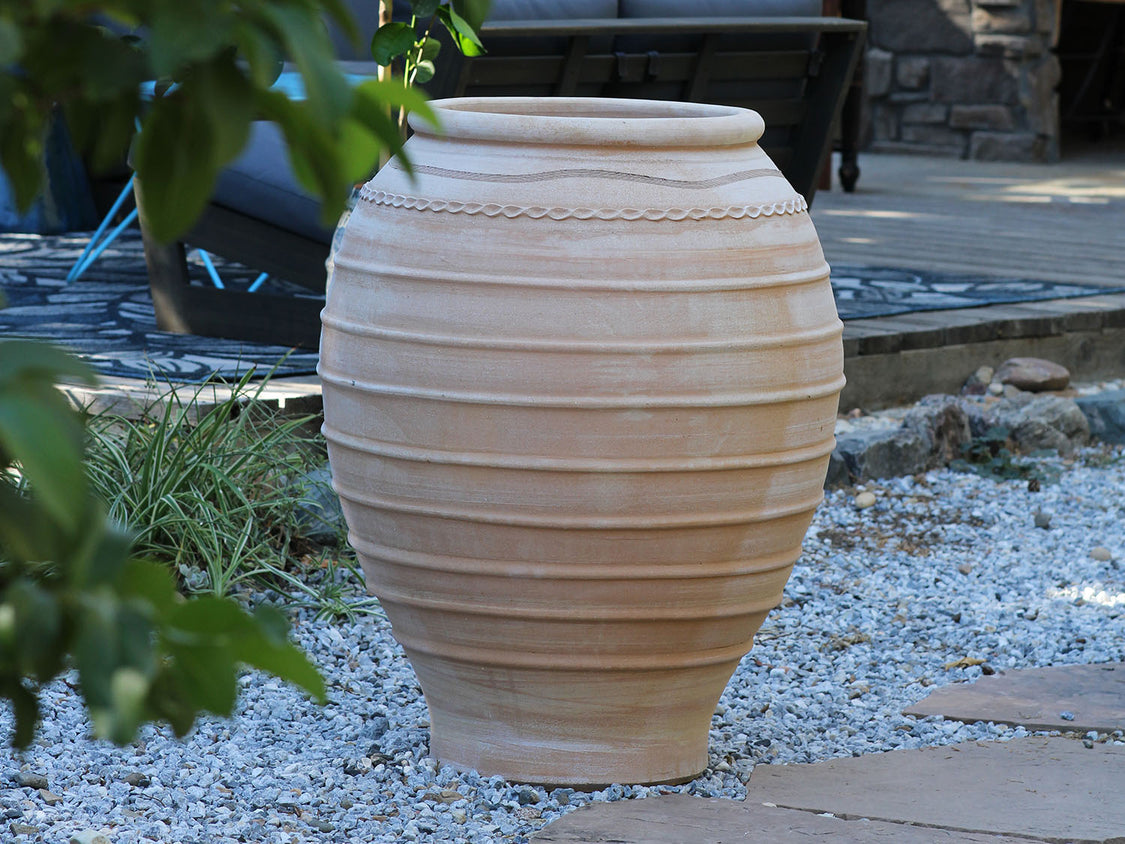
The Koronios has that beehive shape you can spot from a distance, with soft ribs running around its sides. It’s built from high-fired clay, so it can shrug off frost and still let air and moisture move through the roots. It serves equally well as a container for basil or as a bushy ornamental shrub.
Pithari Planter
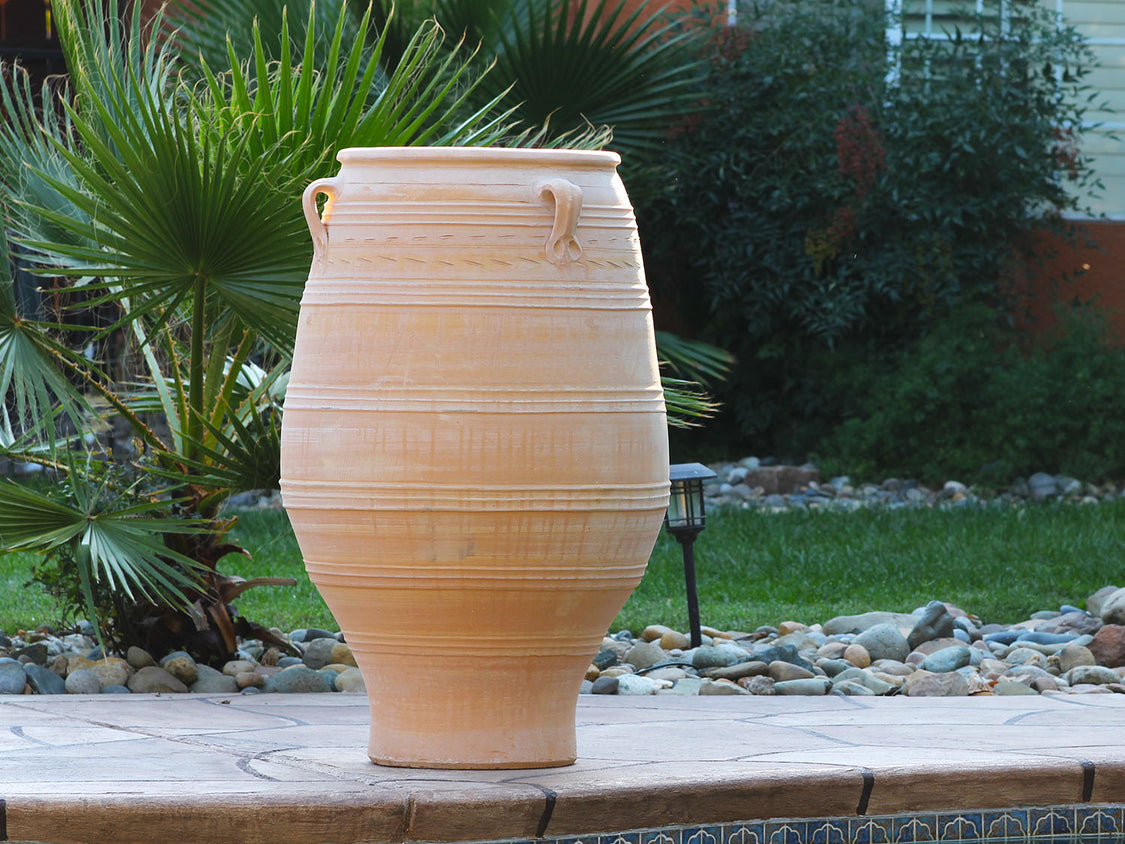
Tall, rounded, and a bit dramatic, the Pithari Planter is one of those pieces that makes a garden feel older than it is. Each one spends about two weeks drying before it’s fired in kilns fueled by olive pits - a long process, but worth it for the strength. The narrow neck and thick walls keep deep-rooted plants happy, even through changing seasons.
Ceramic Planters
Ceramic planters are also made from clay, but most of the time they’re coated in a glaze. That’s what gives them that shiny, colorful finish you see in garden. You can find them in almost any style, sleek black cylinders, bright patterned bowls, even tall statement planters for the patio. If terracotta is “classic,” ceramic is more like “dressy.”
Pros & Cons of Ceramic Planters
Pros
- They hold onto water. The glaze basically seals the surface, so moisture doesn’t evaporate as fast. If you’re tired of watering every day in summer, this helps.
- They look amazing. - Seriously. There’s a style for every taste. Minimalist white, deep jewel tones, funky patterns… you name it.
- Glazing makes them tougher. Compared to plain terracotta, glazed ceramic doesn’t chip or crack quite as easily.
Cons
- Easier to overwater. Since they trap moisture, plants that like drier soil can suffer. Not recommended for succulents. Also, if you’re a chronic overwaterer, this can be risky.
- They heat up. Stick one in full sun on a hot day and it can get really warm, which isn’t great for tender roots.
- Price and weight. Big ceramic pots can be pricey and a workout to move around.
People keep ceramic for their “pretty” plants, things that live in shaded patios or indoor corners where looks matter. Ferns, peace lilies, and moisture-loving understory plants seem to do especially well in them. Some gardeners will use ceramic for style, then switch to terracotta when they need more airflow for a particular plant.
Ceramic Planters From Plantatorem:
Tall Barrel Planters Set of 2
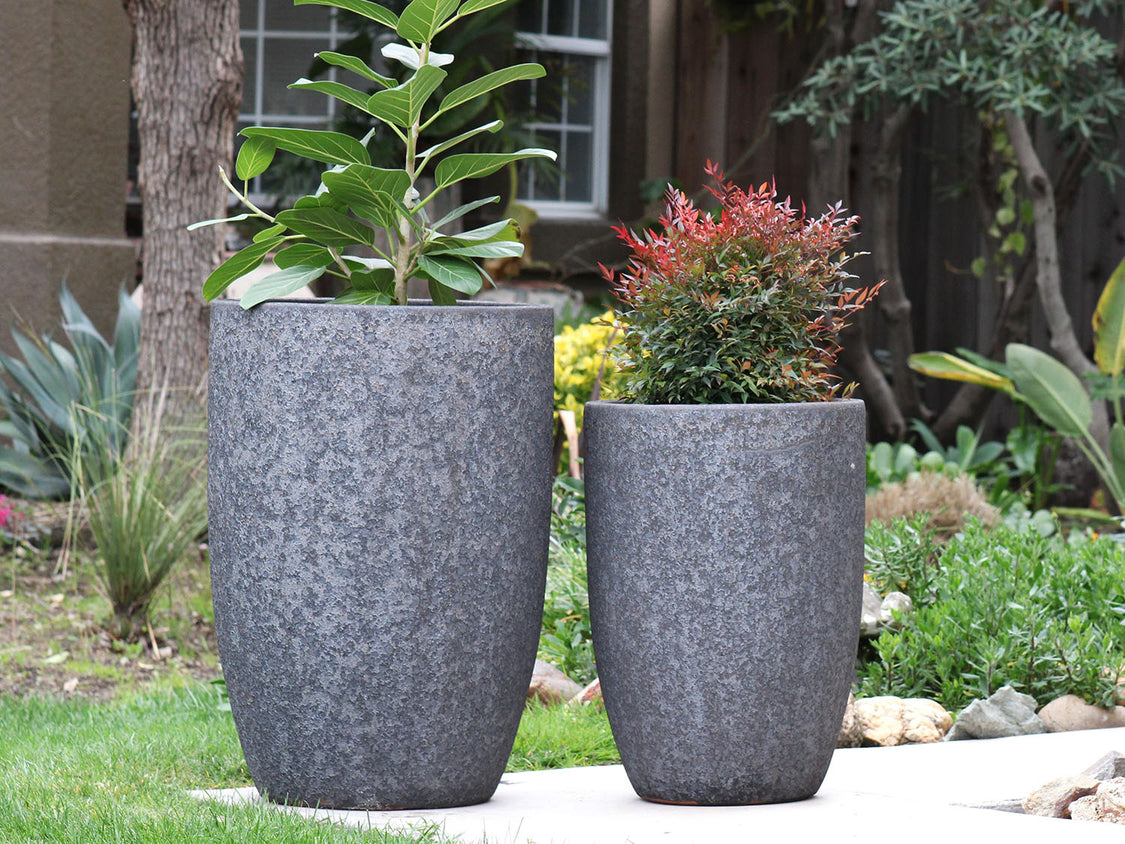
The Tall Barrel Planter Set brings together a hint of French colonial charm and a clean, modern look. Each piece is shaped from sturdy, eco-friendly ceramic and finished by hand with a glazed coat that protects it from the elements. They have plenty of room for everything from full shrubs to trailing greenery, and the built-in drainage holes help keep roots healthy.
Urn Smooth Finish Extra Large
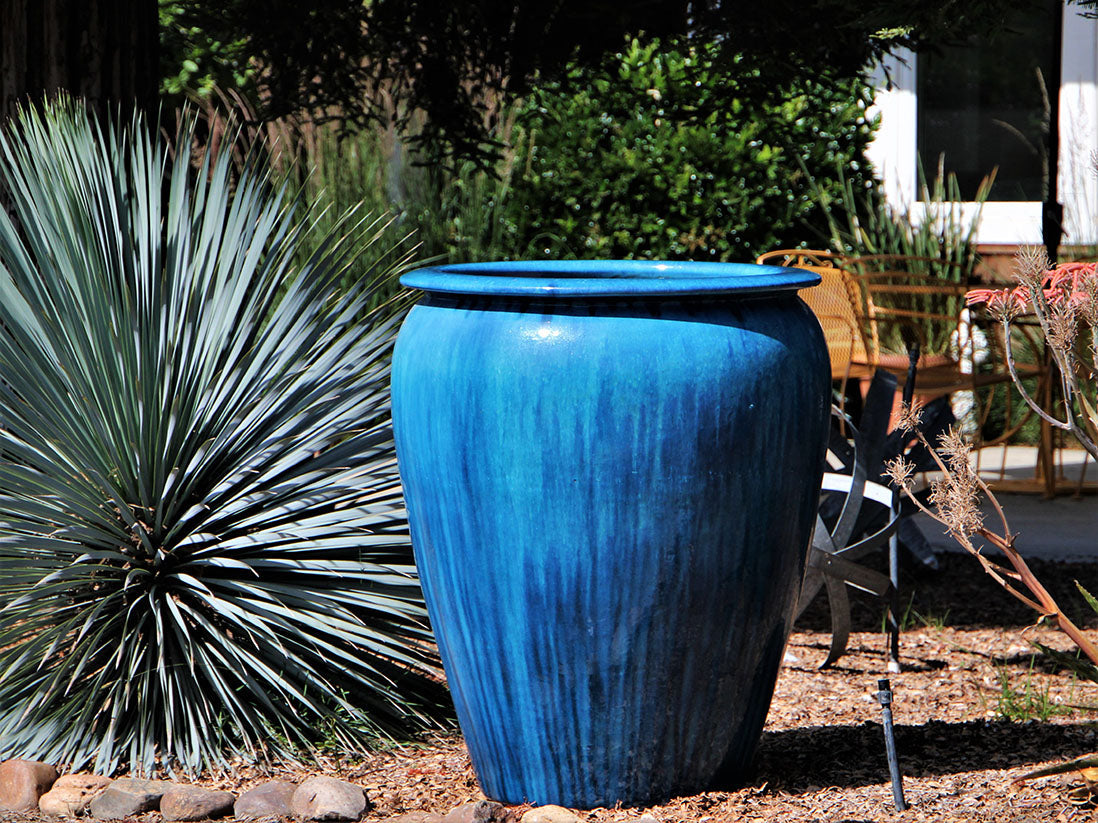
The Extra-Large Urn Planter is shaped by hand from eco-friendly ceramic, giving it a smooth, refined finish that works just as well in a modern courtyard as it does in a classic garden. It’s built to handle frost and year-round weather, and the choice of elegant colors means it can blend in or stand out.
Big Sonoma Planter Set of 4
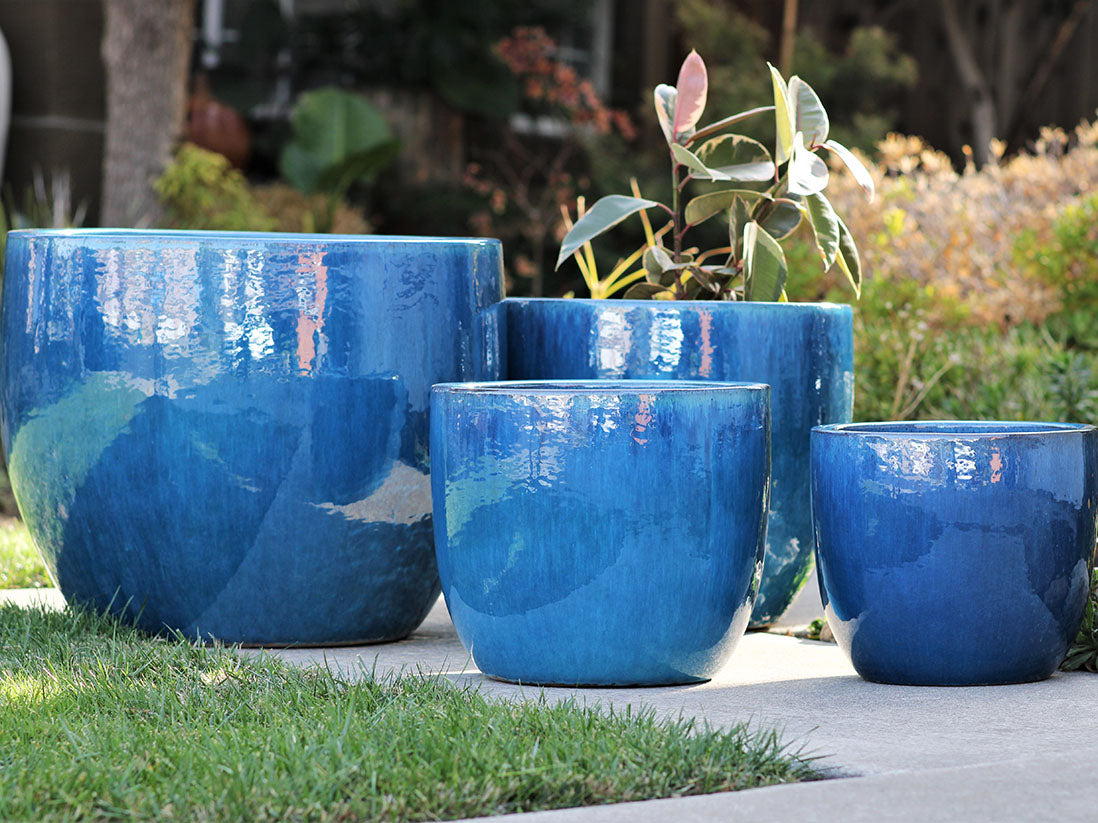
The Big Sonoma Planter Set is made from eco-friendly earthenware, then finished by hand with a rich glaze. Fired at high heat, these planters are tough enough to handle frost, so they can stay outside through the seasons.The tall cylinder design gives roots plenty of space to grow, for all kinds of planting—tall shrubs, flowering plants, or even a simple cluster of succulents.
Concrete Planters
Concrete planters are basically a mix of cement, sand, and water. They’ve got that clean, industrial look you see in modern gardens and rooftop patios. The colors are usually neutral-grays, off-whites, so they blend easily into most spaces. If you want something bold and sturdy for your landscaping, a big concrete planter definitely makes a statement.
Pros & Cons of Concrete Planters
Pros
- Tough as nails. These things are heavy and hard to crack, which makes them perfect for large plants or even small trees that need solid root support.
- They protect roots from extreme weather. Concrete holds temperature well, so the soil inside doesn’t swing wildly between hot and cold.
- They breathe a little. Like terracotta, concrete is porous, so roots still get some airflow—just not quite as much as with clay pots.
Cons
- They’re really heavy. Once you fill one with soil and a plant, good luck moving it without help.
- They can mess with soil pH. Concrete contains lime, which can make the soil more alkaline over time. Some gardeners soak new pots before planting to prevent this.
- They stain. Over time, you’ll see marks from water, soil, or even algae. Regular cleaning helps, but it’s extra work.
Most people like concrete for its durability. It’s basically a “buy once, use forever” kind of pot. But the weight can be a dealbreaker if you rearrange your garden often. They’re a go-to for large outdoor displays and for plants that need steady temperatures or serious root stability.
And here’s a tip: leach or soak the pot before planting, so the lime doesn’t throw off your soil’s pH.
Concrete Planters From Plantatorem:
Cylinder Concrete Planter
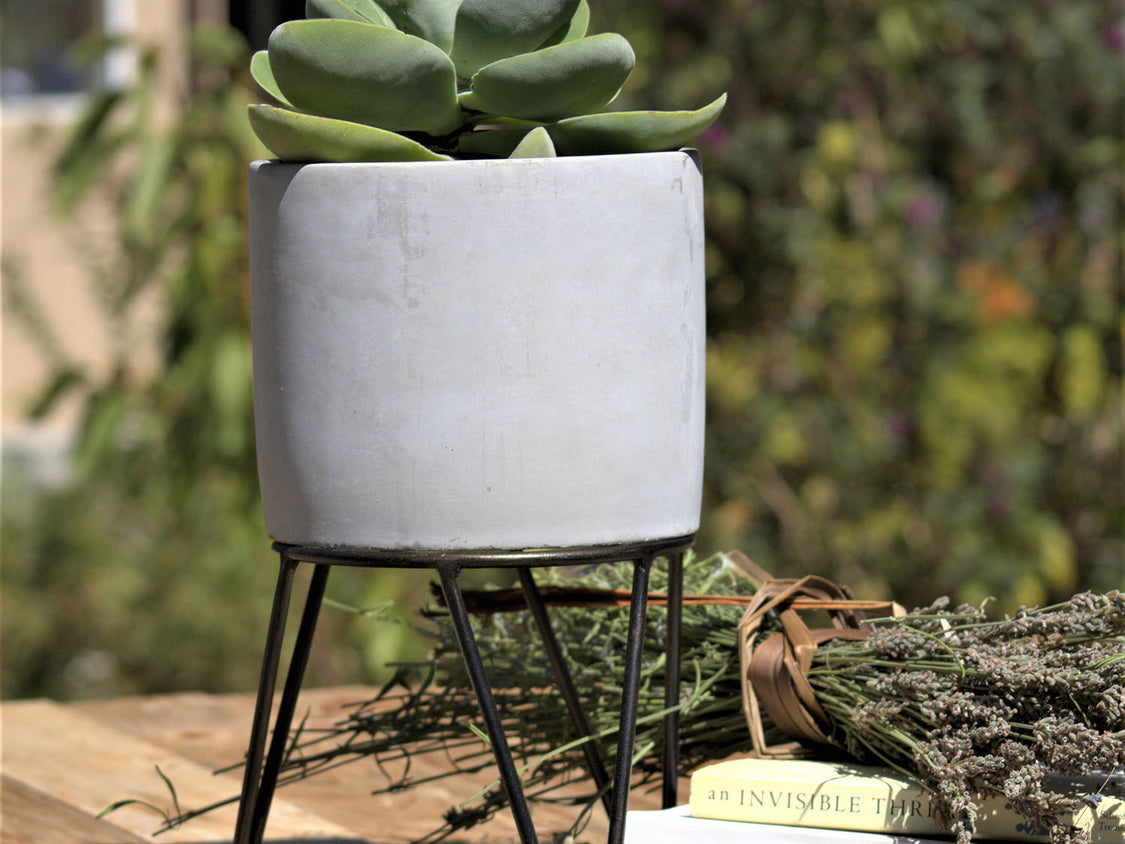
Plantatorem’s Cylinder Concrete Planter has that clean, simple look that works anywhere, indoors with a leafy plant, or outside holding a little succulent garden. The smooth, concrete-style finish feels modern without trying too hard, and the weight gives it a sturdy, dependable feel you’ll appreciate year after year.
Low Rectangular Concrete Planter

The Low Rectangular Concrete Planter is hand-poured from solid concrete. It has a low, clean shape that works just as well for a row of succulents on a windowsill as it does for a cluster of cacti on the patio. The understated design adds a quiet, contemporary edge without stealing the spotlight from your plants.
Low Oval Concrete Planter
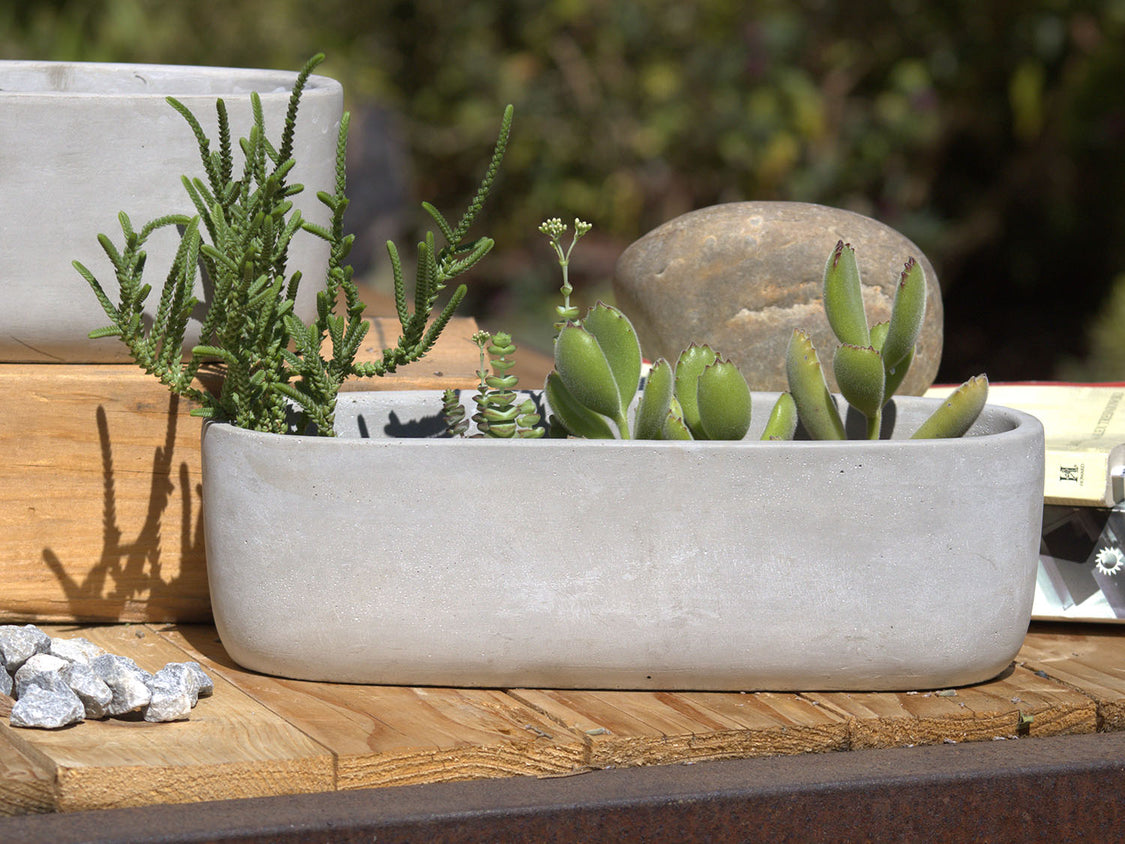
The Low Oval Concrete Planter from Plantatorem has a simple, easygoing shape that fits on a balcony table, in the hallway, or out in the garden. It’s made from solid concrete, smooth to the touch, and low enough to show off little succulents or trailing greens without hiding them.
Comparison Table: Terracotta vs Ceramic vs Concrete Planters
| Feature | Terracotta Pots | Ceramic Planters | Concrete Planters |
|---|---|---|---|
| Breathability | High | Medium (depends on glaze) | Medium |
| Weight | Medium | Heavy | Very Heavy |
| Moisture retention | Low (dries fast) | High (holds water) | Medium |
| Durability | Moderate (can chip/crack) | Good (glazed types) | Excellent (long lasting) |
| Root health | Best for dry-loving plants | Good for moisture lovers | Sturdy for trees, needs pH care |
| Temperature regulation | Poor (cracks in frost) | Moderate | Excellent |
| Price/Aesthetics | Affordable/classic | Pricier/decorative | Moderate/modern |
Wrapping It Up
If you’re after something breathable, budget-friendly, and planet-friendly, terracotta’s a solid choice, especially for succulents, herbs, and that warm, Mediterranean vibe.
Ceramic works best when you want a planter that’s as much decor as it is functional. They shine indoors or in shaded spots, and they’re great for plants that like a bit more moisture. Just be careful using them in hot, sunny areas outside.
Concrete is the tank of the planter world, strong, stable, and great at keeping soil temperatures steady. Perfect for big plants or trees for outdoor space. Just remember to soak it first so the lime doesn’t mess with your soil.






